How to calculate betting odds – how do sports betting odds work
Contrary to pure games of chance, such as roulette, sports betting is considered a game of skill. After all, you can significantly influence the long-term success of betting through your own knowledge and the right betting strategy.
In any case, the basic requirement for successful sports betting is to be able to correctly estimate the probabilities and to know how to calculate the corresponding betting odds.
In this article we explain how betting odds work, how to read the odds correctly and how to convert probabilities into odds.
Best Sports Betting Odds offered at 22Bet

22Bet offers sports betting with high stakes and win limits. In addition, the betting company has a wide range of bets available. Customers who play with higher stakes and do not want to compromise on the betting selection will find 22Bet a great choice!
22bet Review Sign up with 22BET and get 122 €/$ Bonus
Bookmaker Reviews
The payout ratio for the most popular soccer bets can be as high as 98.4%, which means that in the long run the bookmaker’s profit margin on these bets is only 1.6%.
However, this applies primarily to the top events such as World Cups, European Championships, Champions League finals, etc.
But even for everyday games, e.g., from the German Bundesliga, the betting provider 22Bet achieves peak betting odds of approximately 96.5% in our test.
➜ get the best betting odds at 22Bet
Table of Contents: How to Calculate Odds
- Betting odds and probabilities
- How are the odds created in sports betting
- How are betting odds calculated
- Probabilities and odds at casino games
- Conclusion: Mastering Betting Odds and Probabilities for Sports Betting Success
Betting odds (also simply called odds) indicate how much profit you can make on a bet if the event you bet on were to occur. Roughly speaking, the betting odds provide information about how likely the occurrence of a certain event is.
As a rule, each betting provider has its own oddsmaker division, where the probabilities of various events are estimated and the corresponding odds are calculated.
Betting odds indicate how much you can win if the event you bet on occurs. In Europe (excluding the UK), odds are almost always expressed in decimal form, which greatly simplifies the calculation of winnings compared to other odds formats.
Betting odds and probabilities
In sports betting, bookmakers are always making mathematical calculations based on probabilities when creating betting odds. The bookie tries to estimate the probability with which a certain event will occur, or not.

Based on this probability calculation, the bookmaker sets the odds. The less likely an event is expected to occur, the higher the odds. If an event is very likely to happen, the odds decrease.
How does the bookmaker correctly estimate probabilities?
In order to correctly assess the probability of an event to occur, the bookmaker has numerous tools at his disposal.
This included, for example, league tables, statistics, histories, current news, etc…
From a variety of different parameters, the betting provider finally analyzes the corresponding probabilities and converts them into betting odds.
Of course, bookmakers today simply can’t determine the odds themselves for all the bets they offer. Larger sports betting providers have their own bookmakers, but even they reach their limits at some point.
The betting offer has increased drastically in the last couple of years, so that it is almost impossible to calculate each odd manually.

To counteract this, betting odds are nowadays largely bought in. Occasionally, adjustments are made to the odds, for example to make them more attractive for marketing purposes, or if the local bookmakers assess the probabilities differently from the company supplying the odds.
Another possibility is to determine only the match odds and to derive the remaining odds from them. For example, in tennis, if a player is 80% likely to win a match, the probability that he will win the first game as a server can be deduced from that.
How are the odds created in sports betting
Let’s explore the question of how betting odds are calculated. Who determines the odds? In order to win at sports betting, you have to put yourself in the other side’s shoes and understand how the odds are calculated.
True Odds (Fair odds)
These odds reflect the actual probability of an event occurring. They are not influenced by the bookmaker’s margin.
First, the bookmaker calculates the so-called true odds. Let’s assume that FC Barcelona will meet Liverpool FC in the Champions League final and is the favorite in the match. True odds for a 3-way bet could look like this:
| Win Barcelona | Draw | Win Liverpool |
| 50% | 26% | 24% |
So, there are a total of three possible outcomes for a 3-way bet and the total sum of the probabilities is always 100%. Converted into betting odds, we now get the following result.

Implied Odds (Market Odds)
These odds are offered by bookmakers and include their margin. They’re typically slightly worse than true odds and don’t reflect the actual probability of an event occurring.
If the bookmaker offers the true odds to the market, then at some point he will have to shut down, because it costs money to run the business and a profit has to be made from these bets.
If he wants to earn an average of six percent of the stakes as profit, then he multiplies the true odds by 0.94. For our example, we then arrive at the following calculation:
- Win Barcelona: 1.88 (2.00 * 0.94)
- Draw: 3.62 (3.85 * 0.94)
- Win Liverpool: 3.92 (4.17 * 0.94)
In summary, the main difference between true odds and implied odds is the inclusion of the bookmaker’s margin in the latter.
How are betting odds calculated
Let’s check out how to create odds with the help of an example. For this purpose, we look at a Champions League game between Arsenal and Paris Saint Germain.
The bookmaker has analyzed the match thoroughly and estimates the following probability:
| Arsenal to win | 45% = 0.45 |
| Draw | 30% = 0.3 |
| PSG to win | 25% = 0.25 |
The odds are now derived from the inverse of the probability Q = 1 / W. Therefore, the following odds result:
| Arsenal to win | 2.22 |
| Draw | 3.33 |
| PSG to win | 4.00 |
If you bet 10€ on PSG to win, and they actually win, you would receive 40€. Just as the probability of the outcome of this event is estimated, the spread of the bets is also calculated.
Thus, with these fair calculated odds, the losses of those players who bet on Arsenal or Draw would cover the profits of those players who bet on Paris.

The bookie would therefore not make any profit and as he would offer a so-called payout ratio of 100%.
The bookmaker’s odds margin
It is obvious to everyone that a payout rate of 100% is hardly in the interest of a bookmaker. The bookmakers also want to earn money, as they have to cover their expenses and want to make a profit.
Therefore, a lower payout ratio than 100% is used. The usual payout rates in the sports betting industry are around 90%. This means that the bookmaker retains 10% of all wagers made as profit.
Betting companies therefore often make very high turnovers, but distribute the vast majority back to the betting customers in the form of winnings. Only a small percentage is retained as profit margin.

However, this 10% profit margin is only a theoretical value and must be considered in the very long term. In the short term or for individual betting events, it is only very rarely the case that the bets on all possible outcomes are placed equally by the customers.
In most cases, an imbalance in the betting stakes arises, which the bookmaker must counteract by changing the odds accordingly in order to avoid potential losses.
If he handles this smartly (or uses appropriate automatic systems for risk management) then in the long run he can also book the theoretical margin as a practical profit margin.
To make this happen, let’s go back to our example. The bookmaker now multiplies the individual odds by the factor of the payout ratio, i.e., 0.9.
| Arsenal to win | 2.22 * 0.9 = 2.00 |
| Draw | 3.33 * 0.9 = 3.00 |
| PSG to win | 4.00 * 0.9 = 3.60 |
Comparison: Odds margin of the three best betting sites
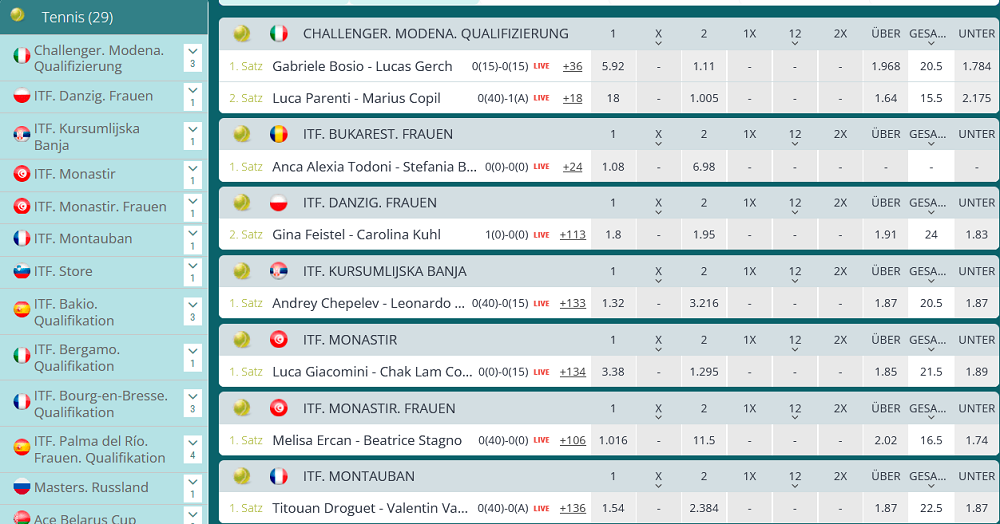
| Sport | 22Bet | Bet365 | Interwetten |
| Soccer | 94.7% | 94.4% | 93.6% |
| Basketball | 94.3% | 94.8% | 92.4% |
| Tennis | 94.1% | 93.6% | 92.3% |
| Ice Hockey | 93.8% | 93.5% | 92.1% |
| Baseball | 93.7% | 93.5% | 91.0% |
| Volleyball | 93.4% | 92.8% | 90.5% |
Live betting odds calculation
While the bookmaker has plenty of time to assess the probabilities and create the betting odds in the case of pre-bets, the situation is naturally quite different when it comes to the far more dynamic live bets!
After all, live betting was introduced by betting companies mainly in order to allow bettors to place picks at any time, even during the betting events.
In the process, match-related events such as the time, goals, red cards etc. keep the odds in constant movement. This not only adds a whole new dimension to sports betting, but also presents bookmakers with entirely new challenges.
Best Live Betting Odds at Bookmaker 888

888sport has been providing online sports betting since 2008 and is one of the fastest-growing bookmakers worldwide. With numerous popular promotions, an excellent reputation for reliability and betting services on a stable platform 888 is very popular with punters especially from the UK.
888Sport Review Sign up with 888 and claim your €/£30 Free BetHow are betting odds updated during live events?
A look at the live betting ranges of the best betting providers reveals several hundred different betting options (match bets and special bets) during an “average” match, especially when it comes to soccer. These include above all:
- Win bets 1/X/2 (also known as “Moneyline” or “Three-Way Bet”)
- Goal bets (number of goals, Team 1, Team 2, both teams, next goal, etc.)
- Handicap bets (especially many Asian handicaps)
- Score bets (exact score, also known as “Correct Score” bets)
- Double Chance bets
- Corners, Yellow Cards, Red Cards
No matter how many oddsmakers a betting company employs, it is obviously completely impossible to constantly monitor hundreds of betting odds (per game!) and change them immediately if necessary.

Therefore, live betting odds are not created manually, but based on algorithms and artificial intelligence. Here, there are some larger providers that offer bettors ready-to-use in-play tools for all types of live betting for a fee.
Even for risk management, there is hardly any need for real oddsmakers; automatic systems have long been used here as well!
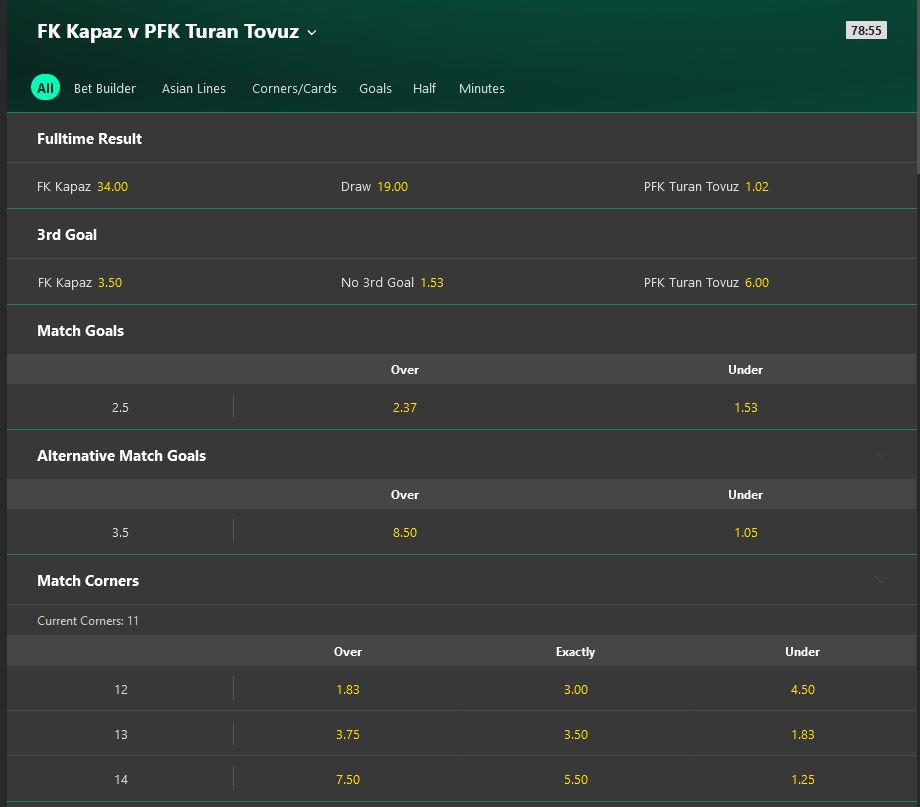
Different odds formats
There are different formats for the way in which odds can be displayed. The three most common ones are:
- Decimal odds / European format
- Fractional odds / UK format
- Moneyline odds / American format
| Decimal odds (EU) | Fractional odds (UK) | Moneyline odds (American) |
| 1.4 | 2/5 | 250 |
| 2.2 | 6/5 | 120 |
| 4.5 | 7/2 | 350 |
Decimal odds
Anyone placing a bet in mainland Europe, Canada, Australia or New Zealand will have to familiarize themselves with the so-called decimal odds.
Decimal odds offer the advantage that they are quite easy to understand. At a glance, it is immediately clear who is the favorite and who is the underdog in a match.
Decimal odds (also called European format) are expressed in the form of a decimal number as in this example. The odds here show the ratio of the stake to the possible win.
The decimal odds indicate the amount you will receive for every euro you wager. The wager is already included in the decimal number, which makes the calculation easier.

Total payout = Stake x Odds
This means that the stake is multiplied by the odds, which gives you the potential win. If you bet on PSG at odds of e.g. 3.6 and you win, you will receive 36€.
Profit = (Stake x Odds) – Stake
If you subtract the wager you made, you get a profit of 26€.
Table: Calculation of profits for decimal odds
| Odds for a PSG win | 3.60 |
| Wager | 10€ |
| Payout amount: | 36€ |
| Profit | Stake * (Odds – 1) = 10 * (3.60 – 1) = 10 * 2.60 = 26€ |
Fractional odds / UK format
With the fractional odds (also called UK odds), the stake is already deducted and the possible net profit of the bet is represented as a fraction.

| Arsenal to win | 2.00 = (2.0 – 1) = 1.0 => 1/1 |
| Draw | 3.00 = (3.0 – 1) = 2.0 => 2/1 |
| PSG to win | 3.60 = (3.6 – 1) = 2.6 => 26/10 => 13/5 |
Again, if you bet 10€ on PSG, the profit comes from the calculation 10 * 13 / 5 = 26. This odds format is most common in the UK and Ireland.
The following section describes in detail the use of fractional odds with a further example. If you are already familiar with the functionality of this odds format, you can skip the following part.

A fractional odd of 5/2 means specifically that for every €2 you bet, you will receive €5 in winnings. The number before the fraction (5) represents the potential profit, while the number after the fraction (2) represents the stake.
In contrast to decimal odds, fractional odds only indicate the pure profit. In this case, a successful soccer bet will return the profit (€5) plus the stake (€2). By the way, a fractional odd of “5/2” corresponds to a decimal odd of “3.5” and an American odds of “250”.
Let’s assume that before the start of a season we want to place a long-term bet of €5 on the champion of the German Bundesliga, and we consider the three teams with the lowest odds:
- FC Bayern München: 2/5
- Borussia Dortmund: 4/1
- RB Leipzig: 15/2
With a little experience, you can see at first glance which team is the favorite in the race. With a successful bet on FC Bayern München, you only get a net profit of 2 units back on a stake of five units.
So, if you bet €5 on FC Bayern Munich, you have the chance to win €2. If you now want to calculate the total payout, you have to add the stake to the winnings, so that you get a result of €7.
The situation is different for a bet on Borussia Dortmund, where you receive four times the amount as profit for each betting unit. If you bet €5, you will receive a profit of €20 in case of success. Here, too, the stake at the end must be added to the winnings if you want to know the amount that the bookmaker will finally pay out in the event of success. In our case, this is €25.
In our last example, for every 2 units placed, you gain 15 units. Here we see a small disadvantage of the English fraction system, since such calculations are already a little more complicated and sometimes difficult to solve without a calculator.
In our example, 2 units correspond to a stake of €5, which means that one unit has the equivalent value of €2.5. The profit of 15 units at €2.5 each gives a total of €37.5 (15 x €2.5), which would be the pure profit for this bet. If you want to calculate the total payout, you have to add the stake again, so that you get a total payout of €42.5.
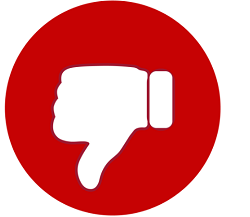
The last example illustrates quite well the disadvantages of English fractional odds, as especially inexperienced bettors find it sometimes difficult to convert odds in their heads.
In addition, especially with combo or system bets, the calculation of the various fractions becomes even more difficult in contrast to single bets.
Conversion of fractional odds to decimal odds
Conversion of fractional odds to decimal odds
You simply need to divide the first number before the fraction by the number after the fraction and add a “1”.
(9 : 5) + 1 = decimal odd ->
-> 1.8 + 1 = decimal odd
Therefore, the decimal odd in this example is 2.8.
Here you can watch an educational video about converting fractions to decimals:
Moneyline odds
Moneyline odds (also called American odds) can be expressed as either positive or negative whole numbers.
- Negative values indicate how much you would need to bet to win 100€.
- Positive values, on the other hand, show how much profit you would make on a 100€ bet.

The Moneyline odds from our previous example look like this:
| Arsenal to win | -100 (same as +100) |
| Draw | +200 |
| PSG to win | +260 |

After this short introduction, we will explain in detail how American odds work in the following section. If this odds format is not your specific interest, you can skip this detailed explanation!
How do Moneyline betting odds work
US odds, also known as moneyline odds or American odds, are used mainly in the USA, as the name suggests. At first glance, the presentation of these odds is confusing for European bettors.
However, if you know the underlying principles, you can quickly find your way around the American odds.

Photo credit: Baishampayan Ghose – https://www.flickr.com/photos/ghoseb/5186138071/
License: CC BY-SA 2.0
With Moneyline odds, it is essential to distinguish between two different notations.
In Moneyline odds, a minus sign before the number indicates that it’s a bet on the favorite. This notation includes all odds that would be under 2.0 in decimal odds. If there’s a plus sign before the number, it indicates a bet that corresponds to a decimal odd of at least 2.0.
A minus sign before the number indicates how much you need to bet to earn a net profit of €100. For example, with odds of “-500,” you need to bet €500 to win €100. This corresponds to a decimal odd of 1.2.
A plus sign before the number indicates the net profit you would receive for a bet of €100. Odds of “+200” therefore corresponds to decimal odds of 3.0.
To get a better idea, let’s take another look at the above example with the overall winner of the German Bundesliga using Moneyline odds:
- FC Bayern Munich: -250
- Borussia Dortmund: +400
- RB Leipzig: +750
In this case, FC Bayern Munich are the big favorites to win the championship. If you want to earn a net profit of €100, you have to bet €250. In other words, if you successfully bet €250 on the favorite, you will get a total payout of €350.

All other teams get a “+” in front of the number, which indicates the net profit for each unit of €100. If you bet €100 on Borussia Dortmund, you get a net profit of €400. The total payout is therefore €500 (net profit + stake).
Let’s say we don’t bet a whole unit on RB Leipzig this time, but want to risk only half a unit on the underdog. Half a unit is 50€.
The net profit is therefore €750/2 = €375. To this amount, add the stake if you want to calculate the size of the total payout: €375 + €50 = €425.
American odds certainly take some time to get used to for Europeans, but they have the advantage that the net profit can be read at a glance for odds with a “+”. The disadvantage of this way of displaying odds is that there are also negative numbers, which are not quite as intuitive, especially at the beginning.
Conversion of Moneyline odds to decimal odds
First, you need to determine whether the Moneyline odds are positive or negative.
For positive American odds, use this formula:
- (Moneyline Odds ÷ 100) + 1 = Decimal Odds
Example calculation: Moneyline Odds = “+250”
(250 ÷ 100) + 1 = Decimal Odds
2.5 + 1 = Decimal Odds
In this example, we get decimal odds of 3.5
For negative Moneyline odds, the following formula is used:
- (100 ÷ Absolute Value of Moneyline Odds) + 1 = Decimal Odds
Example calculation: Moneyline Odds = “-125”
(100 ÷ 125) + 1 = Decimal Odds
0.8 + 1 = Decimal Odds
So, we get decimal odds of 1.8
Other odds formats
In addition to the common formats of sports betting odds described above, there are other types of odds, mainly in the Asian region, which are, however, less relevant for most countries. For the sake of completion, we would like to mention them here.
Hong Kong Odds – HK Odds Explained
This method of displaying odds, which is common in Hong Kong and other parts of Asia, is very similar to the decimal odds format we are used to.
The only difference is that by multiplying the stake with the Hong Kong odds, the net profit is calculated, excluding the original stake.
Therefore, Hong Kong odds, also known as HK odds, of 0.80 on a bet of €100 equals a net profit of €80. In decimal odds format, the odds would be written as 1.80.
Hong Kong odds of 1.5 correspond to decimal odds of 2.5, so you only need to add “1” to Hong Kong odds to get European decimal odds.
Malaysian Odds – Malay odds Explained
Just like the American odds, there are positive and negative odds here with the Malay odds. The positive odds work the same way as the Hong Kong odds.
Malaysian odds of 0.8 are equivalent to European decimal odds of 1.8. Negative odds indicate how much you have to bet to win one euro.
You can use the following formula:
(-1 ÷ Malaysian Odds) + 1 = European Decimal Odds
In our example:
-1 ÷ -1.8 + 1 = European Decimal Odds
1.25 + 1 = European Decimal Odds
So, the correct European Decimal Odds in this case would be 2.25.
Indonesian Odds
Here, too, there are negative and positive odds and here, too, the positive odds work just like in the Hong Kong system.
The negative odds show how many units you must bet to get one unit.
For example, with odds of “-2.5” you have to bet 250€ to win 100€. This corresponds to decimal odds of 1.4.
Casino odds and probabilities
Unlike sports betting, most casino games are pure games of chance, where you cannot influence your own outcome through extensive knowledge or sophisticated strategies.

The course of the ball in roulette or the reels in slot machines simply cannot be predicted. Only blackjack gives the player a certain freedom in decision-making.
Nevertheless, odds based on probabilities of the fundamental gaming events are also applied in the casino!
Roulette odds
Not only in sports betting, but also in roulette, the focus lies on the likelihood of making a profit. That is why it is crucial for a good gaming experience which house edge of the casino is applied to the individual bets at the roulette table.
The house edge refers to the theoretical advantage that the casino has compared to the player. Compared to other games of chance, this advantage is relatively small. In the long term, 97.3% of the stakes in European roulette, for example, are paid out again as winnings. The house edge here is therefore only 2.7%.
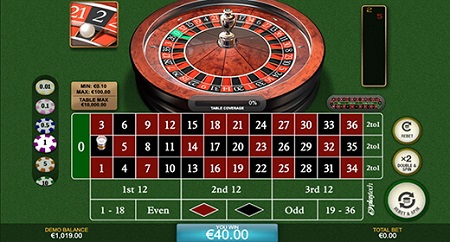
In American roulette, however, the house edge already rises to a little more than 5%. This is because in American roulette, unlike European roulette, there is not only a zero on the wheel, but also a double zero. So, although there are a total of 38 possibilities where the ball can stay in the wheel, the payout odds remain the same as in European roulette with only 37 possibilities.
The payout odds for the most common bets in roulette are:
- Bets with 2 possible outcomes (e.g., red/black or even/odd): Payout odds of 2.0 (stake is doubled)
- Bets with 3 possible outcomes (e.g., dozen bets like 1-12, column bets): Payout odds of 3.0 (stake is tripled)
- Bets with 36 possible outcomes (betting on a single number from 1-36): Payout odds of 36.0 (stake is multiplied by 36)

Therefore, roulette games would be equally “fair” for both sides only if the wheel would show only the 36 numbers without “0” or “00”!
Blackjack odds
Blackjack is not only the most popular card game in the casino, but also the game with the lowest house edge that players have to compete against. Therefore, good blackjack players have a decent opportunity to collect long-term winnings from the casino with the right strategy.
Blackjack is now considered beatable by experts, provided that you can accurately assess the probabilities and odds and make your game selections accordingly.
Unlike roulette, in blackjack, players can influence the outcome of each round, so the odds and chances of winning largely depend on the decisions made during the game.
By consistently applying a successful blackjack strategy, an experienced player can indeed reduce the house’s advantage to less than 1%, and a highly skilled player can even turn the odds in their favor.

The key to success in blackjack is not only the chosen strategy, but also a great deal of self-control and willingness to put in the effort, as well as the necessary bankroll.
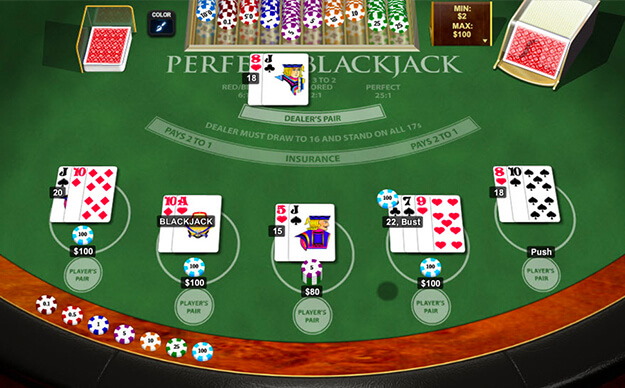
Conclusion: Mastering Betting Odds and Probabilities for Sports Betting Success
In conclusion, it’s clear that a comprehensive understanding of odds in sports betting can be a huge advantage.
However, it’s even more important to understand and grasp the relationship between the offered betting odds and the underlying probabilities.

Only by precisely evaluating the implied probabilities one you make informed decisions for successful sports betting.
This knowledge forms the cornerstone for effective betting strategies that not only yield positive outcomes but also enhance betting profits.
The distinction is solely in the representation: Probabilities express the likelihood of a betting event happening. Conversely, odds display the potential payout relative to the underlying probability.
Only those who can adeptly understand and calculate odds and probabilities are equipped to accurately gauge risks and rewards and make judicious decisions. Comprehensive analysis in this area is key to identifying Value Bets, ultimately boosting long-term winning potential.”



